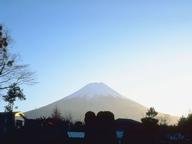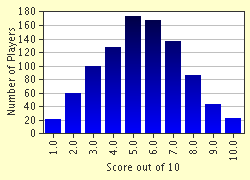Quiz Answer Key and Fun Facts
1. The largest volcanic eruption (or, more probably, set of volcanic eruptions) in recorded Earth history occurred around the end of the Paleozoic, in Siberia. This region of basaltic lava flows is known as the "Siberian Traps." About how much lava did this put out? For comparison, the volume of Mars' moon Phobos is about 5,700 cubic kilometers.
2. Luckily, nowadays things are much more restrained. Volcanism produces about 4.1 cubic kilometers of lava worldwide each year. Where does most of this lava come from, by far?
3. The "Ring of Fire" is a region of extensive volcanic activity along the edges of the Pacific Ocean. It contains the largest number of active volcanoes in the world. What other geologic event is creating this massive amount of volcanism?
4. Hydrothermal activity is often associated with volcanos. The neck of the volcano on White Island, New Zealand, is one of these. There is enough rainwater that the neck of the volcano has actually become something of a lake. It's nice and warm, and there's plenty of sulfur coming up from below. Would you want to go for a swim in this lovely lake?
5. Different volcanos produce lava of different viscosities. This is the main reason some volcanoes erupt explosively, and some just spread runny lava over a large area. To give you an idea of how the difference in viscosities of different types of magma, consider the following experiment. You have two swimming pools, one filled with basaltic lava (think Hawaii), and one filled with rhyolitic lava (think Mount St. Helens). You drop a steel ball in the basaltic lava. It takes about eight hours to sink to the bottom. You drop a steel ball in the rhyolitic lava. About how long does it take to sink to the bottom this time?
6. About 65 million years ago, a series of massive, massive volcanic eruptions spilled about 12,275 cubic miles (512,000 cubic km) of basaltic lava over west-central India. That is truly a lotta lava. Today, the formation is known as the Deccan Traps. This major geologic event took place suspiciously near to the famous mass extinction of which animal group?
7. The 1783 eruption of Laki on Iceland was a huge catastrophe. Twenty-two separate volcanoes erupted on a crack 15 miles long, piled up lava 60 feet high in places, and poured an enormous amount of toxic gasses into the atmosphere. Over 9,000 people died on Iceland alone. What was the single largest cause of death?
8. The Laki eruption produced climate change in places as far away as the fledgling United States of America. Which American founding father was the first person to make the connection between volcanism and climate change?
9. Speaking of volcanic catastrophes... Which of these thriving modern-day cities is NOT located near an active volcano?
10. When we think of the consequences of volcanic eruptions, we tend to think of whole swatches of land burned beyond recognition, people injured or left homeless, and if we're creative we think of things like climate change and so on. But here is far stranger tale.
The 1815 eruption of Tambora in Indonesia was the largest in recorded history. The following year, 1816, was called "the year without summer." A group of friends went on vacation in Switzerland that summer, but it was so cold and nasty that they spent almost their entire holiday indoors. They decided to pass the time with a scary-story writing contest. The contest was won by Mary Shelley, who decided to call her creation... I seem to have forgotten. What was it?
Source: Author
pu2-ke-qi-ri
This quiz was reviewed by FunTrivia editor
crisw before going online.
Any errors found in FunTrivia content are routinely corrected through our feedback system.

